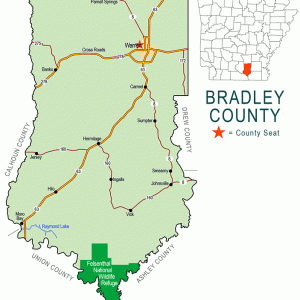calsfoundation@cals.org
Hermitage (Bradley County)
| Latitude and Longitude: | 33°26’47″N 092°10’07″W |
| Elevation: | 184 feet |
| Area: | 1.07 square miles (2020 Census) |
| Population: | 525 (2020 Census) |
| Incorporation Date: | August 30, 1907 |
Historical Population as per the U.S. Census:
|
1810 |
1820 |
1830 |
1840 |
1850 |
1860 |
1870 |
1880 |
1890 |
1900 |
|
– |
– |
– |
– |
– |
– |
– |
– |
– |
|
|
1910 |
1920 |
1930 |
1940 |
1950 |
1960 |
1970 |
1980 |
1990 |
2000 |
|
247 |
285 |
419 |
344 |
398 |
379 |
399 |
378 |
639 |
761 |
|
2010 |
2020 |
|
|
|
|
|
|
|
|
|
830 |
525 |
|
Built on what was once the farm of Wiley Powell and then Jefferson Singer, the city of Hermitage is located on a small ridge near the geographic center of Bradley County. Until the Rock Island Railroad was built across the county, the area was sparsely settled, although a post office named Hermitage existed at this location before the Civil War. The Bradley County tomato industry and the poultry industry are both major components of the Hermitage economy.
Around 1849, Wiley and Louisa Powell moved to Bradley County, taking title to the land that is now Hermitage the next year. Louisa’s parents, James and Susan Thompson, joined the Powells that year, as did Robert Pulley (who served as the pastor of Holly Springs Baptist Church) and the Jarrett family. When Wiley Powell died in June 1850, he left his widow sixteen slaves, twenty-eight head of livestock, 700 bushels of corn, and a cotton gin, as well as three young children. Jefferson Singer, who had lived in Bradley County since 1840, acquired the Powell farm at a later date. A post office was established for Hermitage in 1854. The name of the city was meant to honor President Andrew Jackson, whose home in Nashville, Tennessee, was called The Hermitage.
Until 1906, Hermitage consisted of only one house, one church, and one store, which held the post office. In 1875, the Singer family was operating a steam cotton gin that could turn out 200 bales of cotton a day. When the Rock Island Railroad was built in southern Arkansas, a railroad depot was built at Hermitage, and it soon was joined by a blacksmith shop and a second store, operated by J. P. Lansdale. The rapidly growing community incorporated as a second-class city in 1907.
The Bradley County Bank operated in Hermitage by 1930, but it failed in 1934 due to the Great Depression. The bank eventually was purchased by the Merchants and Planters Bank and reopened in 1937. Around 1945, the city built a city hall and jail; the structure was used for both purposes until a new city hall was built on the highway bypass in 2000. The building was added to the National Register of Historic Places on September 19, 2007. As school consolidation closed various small schools in Bradley County, the Hermitage School system survived and grew. The district encompasses three buildings—an elementary school, a middle school, and a high school—and serves a total of 624 students. The city has several Baptist churches, as well as a Methodist church and an African Methodist Episcopal (AME) church. The city also supports a grocery store and two gas stations. The 2010 census reported a total population in Hermitage of 830—290 of whom were identified as white, 237 as African American, and 349 as Hispanic. Clanton Farms and Harrod & Hensley Tomato Company both provide agricultural jobs to local workers, as does Morris Hatchery. Arkansas Tomato Shippers, founded in Hermitage in 1997, moved its offices to Arizona in 1999 but continues to operate a packing facility in the area.
For additional information:
Gatewood, Robert Lynn. A Bicentennial History of Bradley County. Warren, AR: Warren and Bradley County Bicentennial Committee, 1976.
“Hermitage City Hall and Jail.” National Register of Historic Places nomination form. On file at Arkansas Historic Preservation Program, Little Rock, Arkansas.
“Hermitage Dates Back to Small 1850 Beginning.” Bradley County Roots 9 (September 2000): 42.
Steven Teske
Butler Center for Arkansas Studies






Comments
No comments on this entry yet.